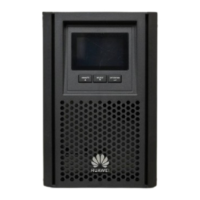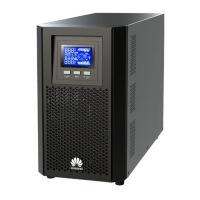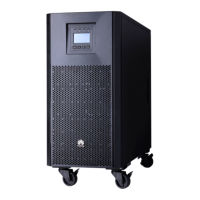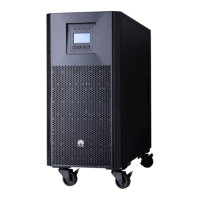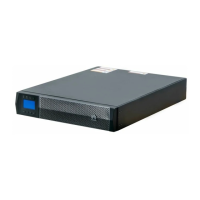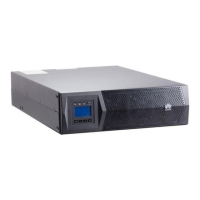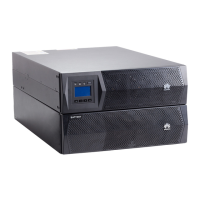● Do not perform welding or grinding work around batteries to prevent re
caused by electric sparks or arcs.
● If batteries will not be used for a long period of time, store and charge them
according to the battery requirements.
● Do not charge or discharge batteries by using a device that does not comply
with local laws and regulations.
● Keep the battery loop disconnected during installation and maintenance.
● Monitor damaged batteries during storage for signs of smoke, ame,
electrolyte leakage, or heat.
● If a battery is faulty, its surface temperature may be high. Do not touch the
battery to avoid scalds.
Short-Circuit Protection
● When installing and maintaining batteries, wrap the exposed cable terminals
on the batteries with insulation tape.
● Avoid foreign objects (such as conductive objects, screws, and liquids) from
entering a battery, as this may cause short circuits.
Leakage Handling
Electrolyte overow may damage the equipment. It will corrode metal parts and
boards, and ultimately damage the boards.
Electrolyte is corrosive and can cause irritation and chemical burns. If you come
into direct contact with the battery electrolyte, do as follows:
● Inhalation: Evacuate from contaminated areas, get fresh air immediately, and
seek immediate medical attention.
● Eye contact: Immediately wash your eyes with water for at least 15 minutes,
do not rub your eyes, and seek immediate medical attention.
● Skin contact: Wash the aected areas immediately with soap and water and
seek immediate medical attention.
● Intake: Seek immediate medical attention.
Special requirements for lead-acid batteries:
When the battery temperature exceeds 60°C, check whether the electrolyte leaks.
If the electrolyte leaks, take proper measures promptly.
UPS2000-A-(1 kVA-3 kVA)
User Manual 1 Safety Information
Issue 17 (2024-01-30) Copyright © Huawei Digital Power Technologies Co., Ltd. 10
